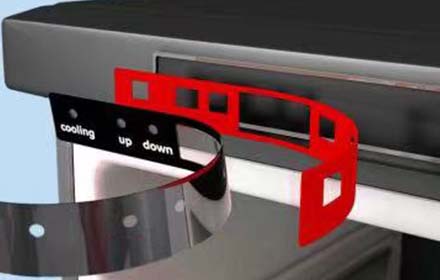
Fiberglass tape adhesive is a commonly used tape in various applications, including interlayer insulation and bundling of transformers (especially high-frequency and microwave oven transformers), securing components in ovens, bundling and fastening metal strips, and wrapping and fixing ceramic heaters and quartz tubes. Proper storage of fiberglass tape is also crucial to maintain its performance.
Excellent High-Temperature Resistance
Fiberglass tape can withstand extremely high temperatures and maintain stable adhesion in high-temperature environments. This makes it widely used in the automotive, aerospace, and electronics industries.
Good Insulation Properties
Due to the insulating nature of fiberglass, fiberglass tape provides excellent electrical insulation. It is suitable for insulating electronic components and securing electrical wires.
Corrosion Resistance
Fiberglass tape exhibits good resistance to chemical corrosion and can withstand exposure to acids, alkalis, and salts, making it ideal for chemical and petroleum industries.
High Strength and Toughness
Fiberglass is known for its high strength and toughness, which translates to fiberglass tape being strong and durable, resistant to tearing or breakage.
The manufacturing of Egret Mfg fiberglass tape involves a tightly controlled process with each step being essential.
It starts with material preparation, where high-strength fiberglass yarn is woven into base fabric. The weaving process is strictly controlled to ensure uniformity and mechanical strength. PTFE emulsion also undergoes rigorous stability testing to ensure no impurities affect the coating performance, laying a solid foundation for the next steps.
The coating and impregnation stage is a critical part of the process. The base fabric is immersed in a PTFE emulsion bath to allow even absorption. Typically, this is repeated 2–3 times, effectively layering the fabric with protective coatings. Each immersion is carefully timed and temperature-controlled to allow the PTFE emulsion to penetrate the fibers and form a strong bond.
High-temperature curing is the step that gives the tape its unique performance. The impregnated fabric is baked at approximately 300–400°C. During this process, the PTFE resin melts and forms a dense fluorocarbon layer, enhancing both heat resistance and surface smoothness.
Finally, in the slitting and lamination stage, the cured material is cut into widths of 5–50 meters per roll to meet customer requirements. Some products may also be laminated with silicone adhesive layers or other functional coatings for added utility.
Ensure the wall surface is clean and dry before applying the fiberglass tape.
Place the tape over the crack and press it firmly into place.
Once the tape is securely adhered to the crack, trim off any excess with a knife.
Allow the fiberglass tape to air dry naturally before sanding.
Apply a sufficient amount of coating over the taped area to ensure a smooth, even wall surface.
Trim any exposed tape until the wall appears flawless and smooth.
No primer is needed before using fiberglass tape adhesive, making it a quick and convenient choice.